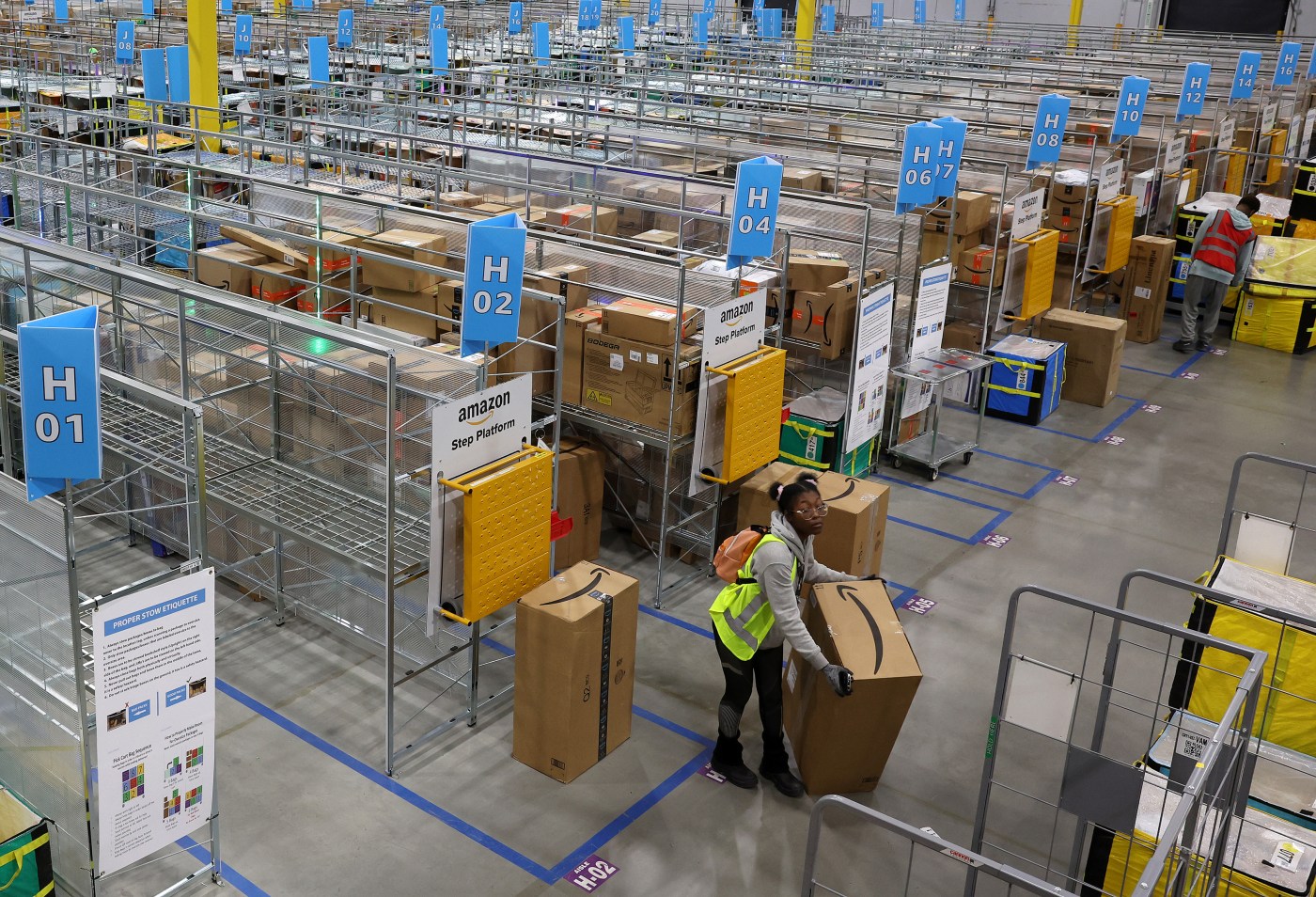
Like a ‘kick in the gut’: Sellers pinched by new fees on Amazon
Amazon.com Inc. merchants have found themselves caught in an economic vice.
Earlier this year, the e-commerce giant rolled out changes to the fees its charges them — essentially shifting more of its operating costs onto the small businesses that account for most of the products sold on the site. Making matters worse for merchants, shoppers are trading down.
In the first four months of the year, American consumers have increasingly opted for the least expensive products in nearly all categories, according to a report released by Adobe Inc. That makes it harder to pass price hikes along to shoppers, and online merchants are struggling to make money.
Duncan Freer, who sells weighted blankets and sleep masks on Amazon, expects his profit margin to slide to 8% from 20% as a result of the new fees. One, imposed in March, charges a levy on shipments sent to the company’s fulfillment centers. That will drive the cost of shipping two pallets of Freer’s products to Amazon to more than $800, up four-fold from what it cost him in October, he said. Amazon reduced the cost of fulfilling each customer order, but Freer said it only partially offsets the new fees.
“Amazon just keeps grabbing more and more,” said the Chicago businessman, whose sales on the marketplace amount to about $500,000 a year. “It’s like a kick in the gut.”
Amazon said the new fees are intended to reflect its own cost of distributing inventory around the U.S. so more items can be delivered in just one day, which helps boost overall sales for online merchants. Some fees actually went down. In January, Amazon cut commissions for sellers of low-cost apparel, a move interpreted by merchants as an effort to blunt competition from Chinese fast-fashion startup Shein.
“When we announced these new fee changes in December, we estimated that sellers will on average see an increase of $0.15 per unit sold, which is significantly less than the average fee increases announced by other fulfillment service providers,” company spokeswoman Mira Dix said in an emailed statement. “As sellers are adapting to these changes we have seen that the actual impact is even lower, and many more sellers are seeing a decrease in the average fees that they are paying to Amazon.”
In last month’s earnings report, the cloud computing division’s strong performance overshadowed the growing tension between Amazon and its sellers. Amazon Web Services in the first quarter contributed more than 60% of the company’s operating income even though it accounts for less than 20% of revenue.
San Francisco seller Neil Ayton sells golf yardage books, yoga gear and pickleball equipment.
One of his most popular products is a yoga stick practitioners use to stretch. It was 59 inches, the longest it could be to avoid a higher fee tier. Earlier this year, he noticed Amazon cut the size limit, and suddenly his yoga sticks were one inch too long. Shipping costs for each product jumped from $10 to $26, and Ayton began losing $3 per sale. He recalled hundreds of yoga sticks from Amazon warehouses and trimmed an inch off each one, but said doing so merely minimized his losses. Now he plans to wind down his Amazon business.
“Amazon kind of teases you,” Ayton said. “It’s great when it’s working nicely, but you never know what surprise is coming tomorrow.”


